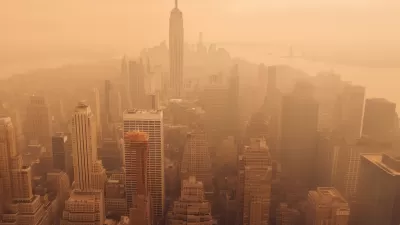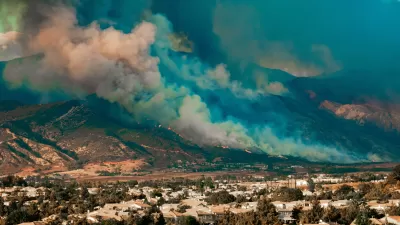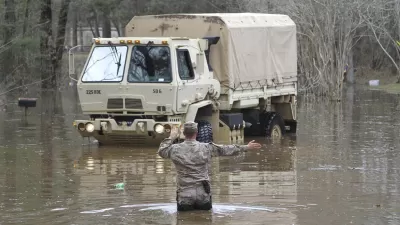Researchers are working to understand how people behave during wildfire events and how to most effectively get people to safety during deadly fires.

In a piece for Wired, Aarian Marshall describes the growing field of wildlife evacuation research, which is becoming a more crucial piece of cities’ emergency plans as wildfires become more destructive and unpredictable.
When evacuations go wrong, they really go wrong. In LA’s Pacific Palisades neighborhood, panicked drivers stuck in traffic abandoned their vehicles in the middle of evacuation routes, leaving emergency crews unable to reach the fires. Authorities used bulldozers to push empty cars out of the way.”
Researchers are working to understand how people respond to evacuations and how to most effectively get key information across in emergency situations. “The research thus far suggests that reactions to wildfires, and whether people choose to stay, go, or just wait around for a while, can be determined by a bunch of things: whether residents have been through wildfire warnings before, and whether those warnings were followed by actual threats; how the emergency is being communicated to them; and how the neighbors around them react.”
While some residents who have experienced fires before are more likely to stay, others are more likely to evacuate. Lower-income people are less likely to flee, most likely due to reduced access to transportation and lodging. According to Marshall, “It’s a faint silver lining, that the horror Californians experienced this week might produce important findings that will help others avoid the worst in the future.”
FULL STORY: The Evolving (and Inexact) Science of Wildfire Evacuation

Planetizen Federal Action Tracker
A weekly monitor of how Trump’s orders and actions are impacting planners and planning in America.

San Francisco's School District Spent $105M To Build Affordable Housing for Teachers — And That's Just the Beginning
SFUSD joins a growing list of school districts using their land holdings to address housing affordability challenges faced by their own employees.

The Tiny, Adorable $7,000 Car Turning Japan Onto EVs
The single seat Mibot charges from a regular plug as quickly as an iPad, and is about half the price of an average EV.

Seattle's Plan for Adopting Driverless Cars
Equity, safety, accessibility and affordability are front of mind as the city prepares for robotaxis and other autonomous vehicles.

As Trump Phases Out FEMA, Is It Time to Flee the Floodplains?
With less federal funding available for disaster relief efforts, the need to relocate at-risk communities is more urgent than ever.

With Protected Lanes, 460% More People Commute by Bike
For those needing more ammo, more data proving what we already knew is here.
Urban Design for Planners 1: Software Tools
This six-course series explores essential urban design concepts using open source software and equips planners with the tools they need to participate fully in the urban design process.
Planning for Universal Design
Learn the tools for implementing Universal Design in planning regulations.
Smith Gee Studio
City of Charlotte
City of Camden Redevelopment Agency
City of Astoria
Transportation Research & Education Center (TREC) at Portland State University
US High Speed Rail Association
City of Camden Redevelopment Agency
Municipality of Princeton (NJ)





























